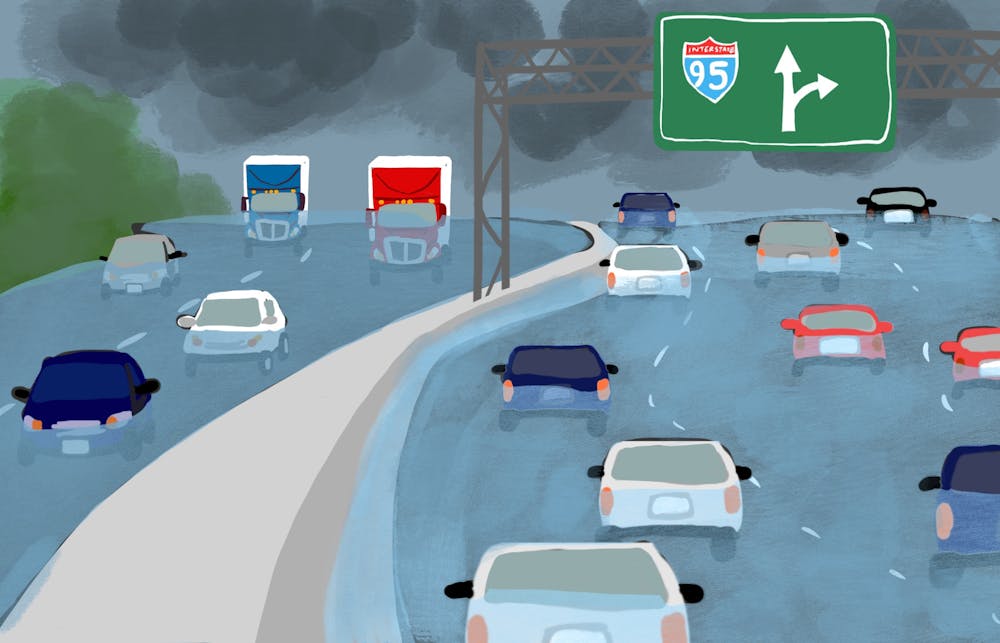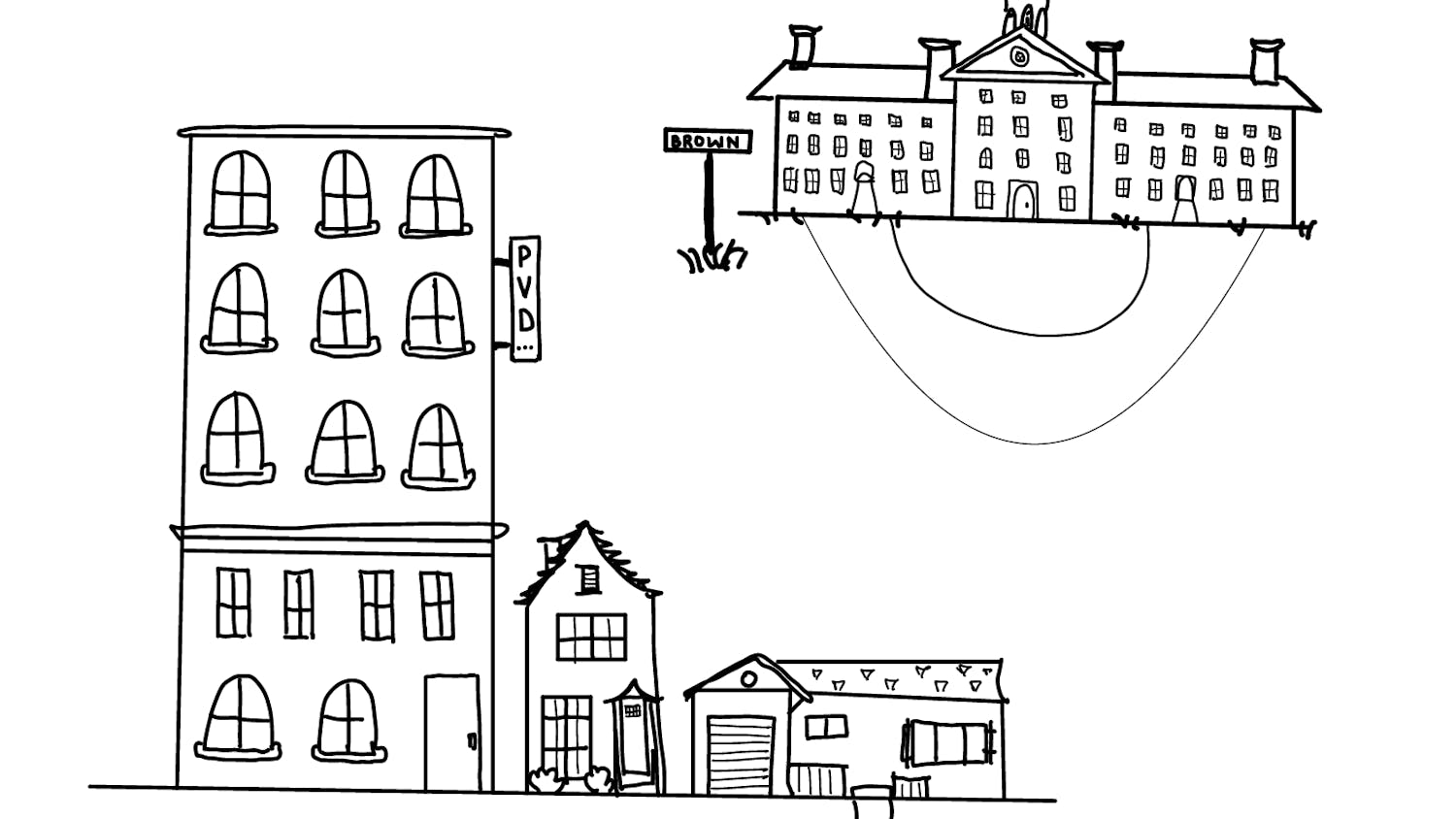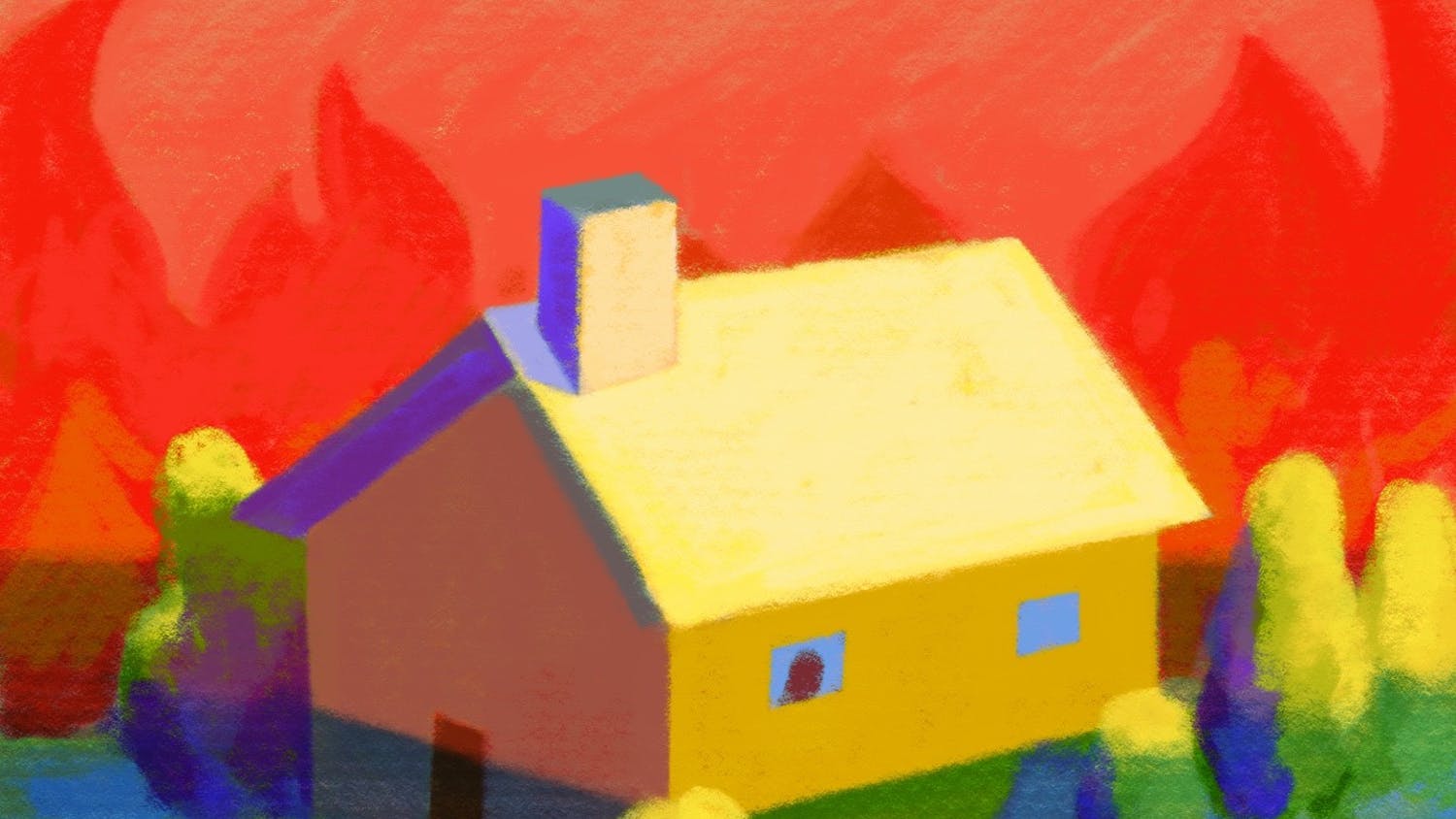Two weeks ago, torrential rain left parts of the Ocean State underwater. In the coming years, Providence’s stormwater infrastructure will likely be tested by more frequent and intense storms due to climate change, experts told The Herald, with some local climate experts saying the system is outdated and underprepared.
Flooding in the Providence area on Labor Day shut down Interstate 95 and Route 10 for hours and even collapsed a building at 215 Peace St. Rhode Island saw five to seven inches of rain over 90 minutes Sept. 5, overwhelming the city’s storm drains, according to a statement from Charles St. Martin, chief public affairs officer at the Rhode Island Department of Transportation.
Some drains in the region were built over 150 years ago, said Craig Hochman, an engineer at the Providence Department of Public Works.
According to climate experts, flooding events like these are likely to become more common and more intense in the coming years. They say investment in green solutions and artificial — also known as “gray” — infrastructure, such as better drainage pipes, will be needed to avoid future flooding issues.
The Labor Day storm was “one of the major impacts of climate change that Rhode Island has already begun to see and is going to increasingly see according to all of the forecasts,” said Sheila Dormody, director of climate and city programs for the Rhode Island chapter of Nature Conservancy, an environmental group.
“Our stormwater infrastructure is not designed for what it currently needs to be designed for,” she said.
Providence has seen an increase in the amount of impervious cover — surfaces that do not absorb water — around the city, mostly in the form of asphalt and concrete. With less greenery to soak up the rain, drainage systems can become overwhelmed when larger storms hit the area, Dormody said.
The “rare storm” had “severely taxed” the drainage system on the highways, which are overseen by RIDOT, St. Martin said. Much of that infrastructure “was designed 50 years ago and has not been upgraded since.”
“We realize that this type of situation will become more common as climate change accelerates,” he continued. “We are evaluating the capacity of all our systems and upgrading as quickly as possible.”
The increase in severe storms is due to climate change-induced temperature rise, said Baylor Fox-Kemper, professor of earth, environmental and planetary Sciences. He explained that warmer air leads to more intense rainfall and drying.
But Fox-Kemper noted that it’s difficult to link any one storm to climate change, nor is it possible to say that storms will always intensify at a certain rate.
Droughts, like the one Rhode Island is currently experiencing, can make flooding worse, as dried out soil is unable to absorb much of the water, Fox-Kemper said.
Yet even without such dry conditions, stronger storms will likely cause problems in Rhode Island.
“Intensity is really a big deal because your stormwater systems are designed to handle a certain amount of rain,” said Curt Spalding, an environmental consultant who works with climate group Providence Resilience Partnership. “It’s so hard to design something that can handle this wide range of events.”
But issues with RIDOT and Providence’s stormwater systems did not develop overnight, according to local environmental advocates such as Spalding and Dormody.
Dormody noted that the state has failed to meet legal standards for drainage infrastructure in the past.
In 2015, RIDOT was sued by the Environmental Protection Agency due to violations of the Clean Water Act. The parties reached a consent agreement that same year, which required that RIDOT inspect and repair many of its drainage systems.
At the time, R.I. District Attorney Peter Neronha released a statement that said that much of RIDOT’s physical infrastructure was “in poor repair” and had "not been adequately maintained."
Dormody argued that the legal action against the department prompted action to repair aging infrastructure. Still, “the decades of disinvestment and neglect of those systems is a pretty steep price to pay,” he said.
In an email to The Herald, St. Martin wrote that the recent flooding was “not related to the issues brought by the EPA in the consent decree,” and that starting in 2015, RIDOT began investing $100 million in reducing pollution from stormwater.
“We are in full compliance with the consent decree,” St. Martin wrote.
Hochman noted that the city has also taken action to repair aging drainage infrastructure, much of which is decaying because of the materials it was built with.
Providence has been cleaning 25 miles of sewer main and looking at pavement reduction strategies “specifically to address flooding,” Hochman said. Additionally, the city is “looking to install green infrastructure” to deal with runoff that pavement reduction cannot address, he added.
The money for some of these initiatives came from the American Rescue Plan Act, but, historically, finding funding and political support for improving stormwater infrastructure has been difficult, Spalding noted.
“Part of how these systems ended up being neglected is there’s no source of funding dedicated to taking care of that infrastructure,” he said, adding that Providence, unlike other cities, does not specifically tax to support stormwater utilities.
Spalding and Dormody explained that they prefer green solutions, which involve restoring the water cycle and watershed to its natural state.
The goal is to reestablish marshes and floodplains while increasing the amount of greenery that can soak up water before it enters the drainage system, Spalding said.
Additionally, green infrastructure is often cheaper and less likely to lead to pollution than gray infrastructure, he said.
“The burdens (of climate change) are mostly borne in Black and brown neighborhoods, lower-income neighborhoods that don’t have as much tree canopy cover or open space as some of our wealthier and whiter neighborhoods,” Dormody said.
When repairing infrastructure in the future, governments should look to be as flexible as possible, Fox-Kemper noted.
“You can just build in a little extra margin for error, knowing that the future is uncertain, maybe more uncertain than you expect it to be,” he said.
Despite these uncertainties, there is plenty of optimism about the path forward.
“The good news is we actually know what to do,” Dormody said. “There are a lot of very complicated problems related to climate change. This is not one of them.”

Jacob Smollen is a Metro editor covering city and state politics and co-editor of the Bruno Brief. He is a junior from Philadelphia studying International and Public Affairs.





